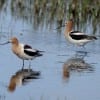 By Jim Stevenson
By Jim Stevenson
I have changed the Arizona Trip from a bird photography trip to a birding trip and added a day. It’s six days and $1000. The details are attached. This is the last bird gallery for the Great Plains, with some really neat shorebirds. I am on the South Island of New Zealand and will go out in the morning into the Antarctic Ocean to shoot Wandering Albatross. Other than that, slow day. Also on a personal note, I believe I just photographed the last bird family on Earth for me, the Accentors. The one in New Zealand is called a Hedge Sparrow, and isn’t much to look at (AA’s gonna kill me for that!), but unless my camera malfunctioned, I nailed him. I’ll put him in a gallery.
Barbara, World’s Greatest Graphic Artist, and I are beginning to work on the 2015 calendar. It’s been very popular, but if any of you have any suggestions for it, send ’em on! I showed the Sulfur-bellied Flycatcher to someone at my house May 8 or so. Who was it? Please send prayers or good thoughts to the family of my best friend Richard Mayfield, as they are facing a tough health trial. [And while you’re at it, his Razorbacks!]
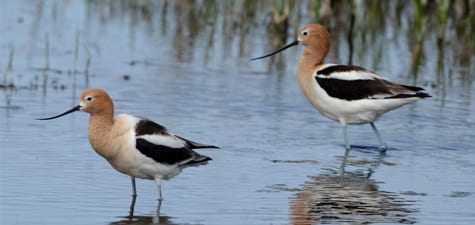
Here’s a pair if American Avocets, and you can distinguish the gender by evaluating the curvature of the beak (as is the case with many shorebirds). Females have a greater curve on the bill. It would be an interesting study to observe the feeding behaviors of the two avocet sexes and ascertain any differences which might be based on the bill curvature.
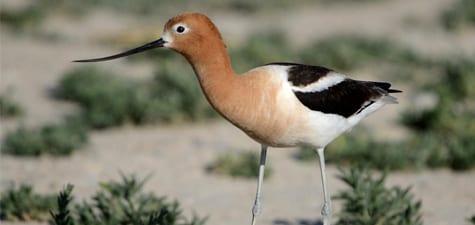
Avocets attain this beigecolor in March when many are still wintering in the Galveston area. The cobalt-blue legs are reminiscent of breeding-plumaged Reddish Egrets, which theyshare briny shallows with on the UTC. The webbed feet might be a surprise but they actually swim in flocks, feeding as they float.
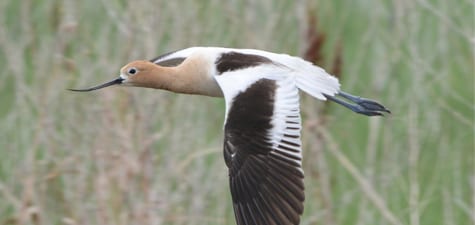
Shorebirds, like waterfowl and many other waterbirds, fly with their necks extended for balance. Sinceavocets don’t leave the Continent in fall, they can get along without long, pointed wings for long flight. However, they do have black primaries, which will often indicate a migratory, white bird.
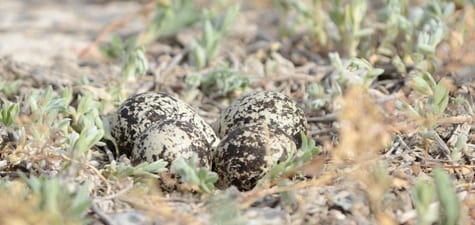
Avocets nest around the Great Salt Lake and here is some evidence. In a somewhat unlikely scene, this male avocet is swimming and feeding in the rain. This lovely female avocet is coming in for a landing.
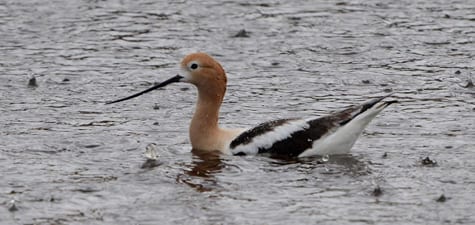
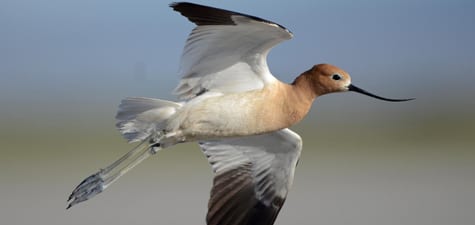
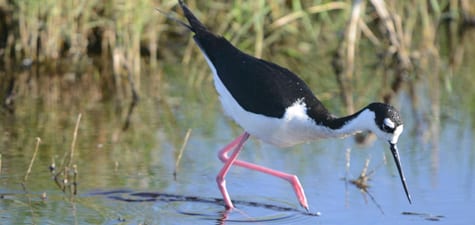
The art of sexing stilts is quite different, and involves the color of the back. This is a male, with a jet-black dorsum, while females are browner atop. The long, needle-like bill is useful for sucking up plankton and insect larvae (yes, I KNOW I’ve told you that before!) and the bubblegum-colored legs permit them excellent camouflage in Bazooka gum factories. (There, you happy?)
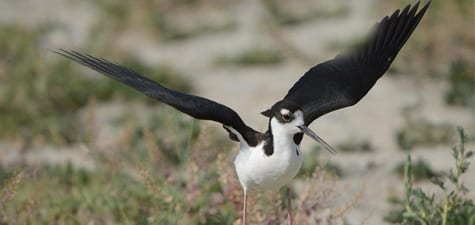
Parent birds of several species feign and perform various antics to lure potential predators away from nests or chicks. This male stilt is quite exercised that I stopped the car near an apparent nest. It’s really amazing they have the reproductive success they have with folks and their animals everywhere. But one thing to remember is that people keep predators
away.
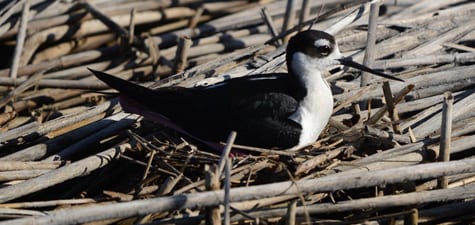
Here is a male stilt incubating eggs by the Great Salt Lake. Manyspecies alternate this chore while some only have females sitting on the eggs. With a (kinda) related species African Lily Trotter, Ithink), males incubate while the females take the first clutch and teach them how to find food. It’s easy (and sometimes humorous) to get all anthropomorphic about sex roles with birds but remember that whatever works for a species is the best strategy.
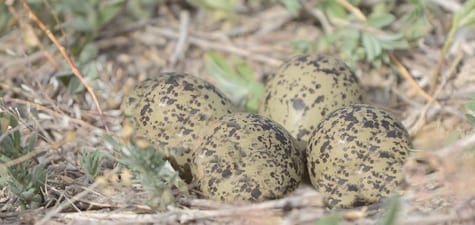
Here is a clutch of stilt eggs.
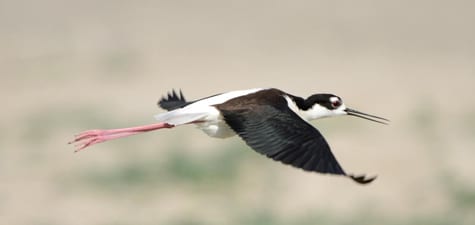
Judging from the scapulars, I believe this is a female stilt. Notethe long legs & extended neck. I also may be seeing a brood pouch to the left of the right wing. Tail color is an easy mistake to make as many folks mistake the tips ofprimaries for the tail, when the bird is at rest. And with stilts and avocets forever shrieking about something, seeing the bill open is no big surprise.
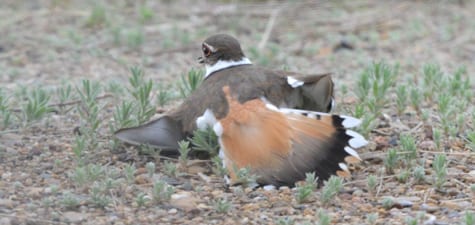
Killdeer may be the flagship species of the relatively large family of plovers. Heck, they have TWO rings! This parent is feigning, trying to draw me away from her chicks, who are obeying her by hidingin the grass. The beige patch you see on the rump is a flash color that is sure to get the attention of most predators.
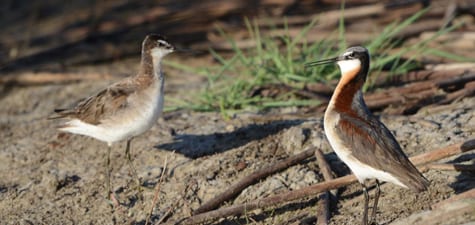
Phalaropes are unique shorebirds set off from sandpipers, w/ needle-like bills for sucking plankton & larval insects up, long migrations and often wintering grounds at sea. Females are more colorful and rule the roost, with some species practicing polyandry, as multiple males spin and dab for food items for a single gal.
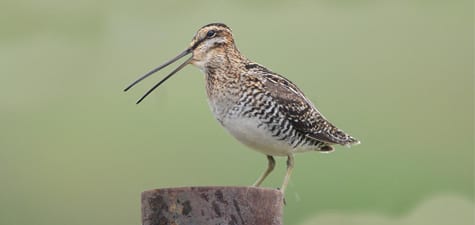
The old “Common” Snipe (meaning “common to the Old and New Worlds”) is now the Wilson’s Snipe, named for Alexander Wilson (now thatthe old species is split). Thetruth is, most species whose range extends from the Americas to the Old World probably are either a separate species or are diverging as we speak – when there is no gene flow across the World’s oceans.
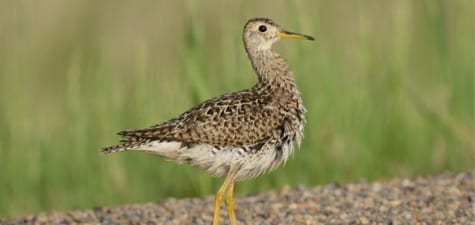
A lovely breeder of grasslands is the Upland Sandpiper, a species which often migrates up and down the Great Plains. As a relatively early migrant, it is a species we can count on finding at FeatherFest, off Stewart Road. The large eyes indicate a visual feeder, and theypick up arthropods in the grass. A surreal joy is hearing them before dawn over my Indian Beach house as fall migrants, just before Labor Day.
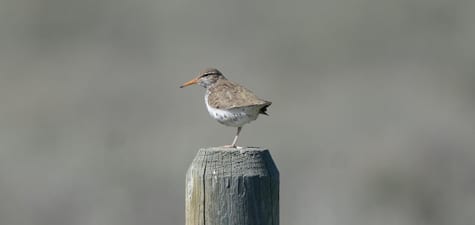
Spotted Sandpipers have a large breeding range, and they are common along the lakes’ edges in the Plains. Here you can see the spots that appear underneath in spring and the orange bill. They are famous for bobbing their entire rear end, as well as flying with straight, stiff wings over the water.
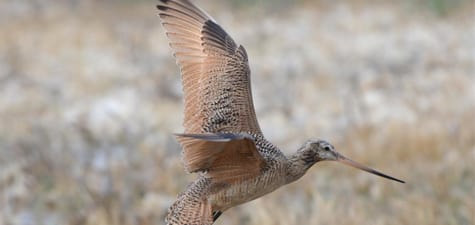
Marbled Godwits are common in the Northern Great Plains in high grass, blending in perfectlywith the vegetation. Still, if you get near the nest, they make no attempt at camouflage. They and curlews are very loud parents, flying around, screaming their heads off. Truth is, it might be tricky telling godwits from curlews if their bills didn’t curve in opposite directions.
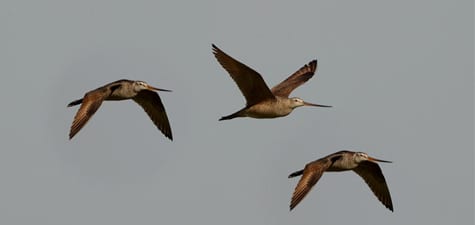
Here’s a nice flight of all-in-focus Marbled Godwits, not quite settled into theirpairs of the breeding season. Godwits and curlews have long, strong wings and they are powerful fliers. Of course, virtually all shorebirds are excellent on the wing, and most also have very long migrations – many from the Arctic (nearly) to the Antarctic.
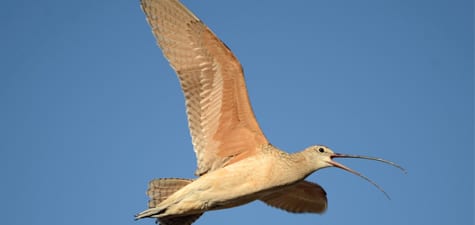
Obviously, this bird’s beak curves down. That makes it a curlew, and this is the famous Long-billed Curlew. She flew by me screaming coz I stopped (apparently) near her young family and got out of the car. Up close like this you can see this species doesn’t have the barring godwits have, but at a distance, it’s not always an easy call.
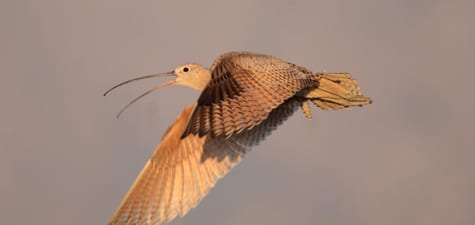
Here’s a little nicer picture of a male flying by, screaming. Lovely colors, huh? And one more for the road. Here the male can hardly hide his anxiety. Time to leave!
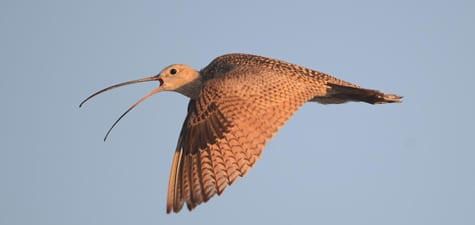
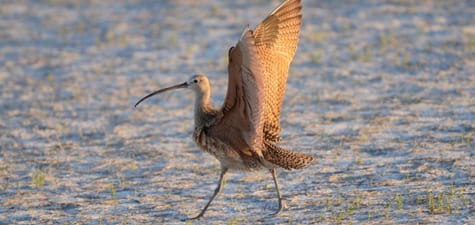
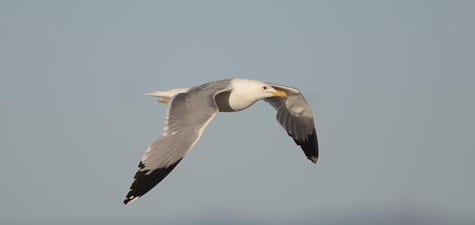
Here’s the savior of theMormon’s crops, the California Gull. They are a bit darker atop and have less color on the bill than some large gulls. The species certainly is in California along the Ocean, but is far more terrestrial than some of the other West Coast gulls. There is a lovely stature erected by the LDS to these gulls that reminds them of the value of having wild creatures in place, and their importance in our lives.
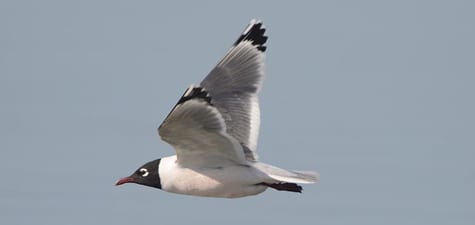
Franklin’s Gulls are nothing more than alate fall/spring rarity on the UTC, butthey are abundant in the Plains as breeding birds. With no inland Laughing Gulls, and the Bonapartes nesting further north, they are the only black-headed show in town. This bird still has a tiny bit ofpinkish that we often see on spring migrants, which arrive off the Gulf having eaten shrimp laden with pigment.
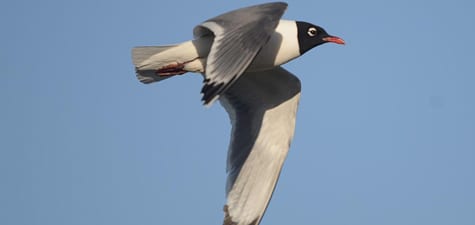
This carefully-sculpted photograph showsyou they can fly to the right as well.
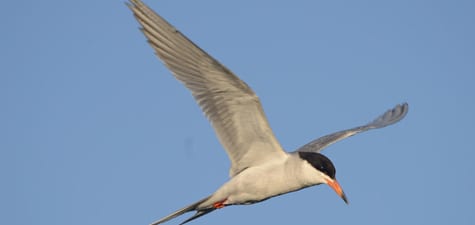
Forster’s Terns are quite common in many places in Inland America. Here in the Great Salt Lake they join Caspian and Black Terns, snatching fish off the surface (and other life forms by the Blacks, especially). Common Terns, which breed more in Canada, have red bill bases and legs, a difference we easily see in spring on Galveston.
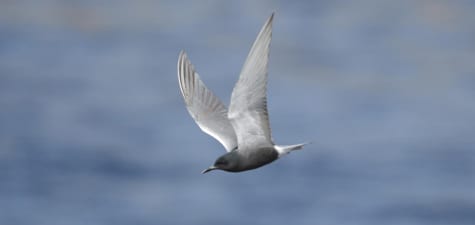
Black Terns breed over much of the Central and Western half the Country inland and do not eat fish like (as much as?) their tern relatives. They are small and often seen flitting over the surface for emerging arthropods and such. We see them passing through the UTC in late spring and early fall but they aren’t seen feedingas much as other terns.
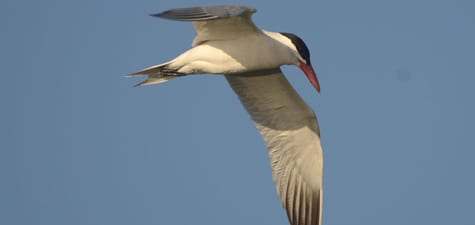
The thick reddish beak and large size is more than enough to ID this Caspian Tern, when there are no Royals inland, anyway. They are strong enough to lift decent-sized fish off the surface, not just “minnows” of smaller species like Forster’s. This species is almost Worldwide, salt and fresh: We’ll see them in Australia and they’re named for the Caspian Sea! I have also seen them in South America.

 Posted in
Posted in 























